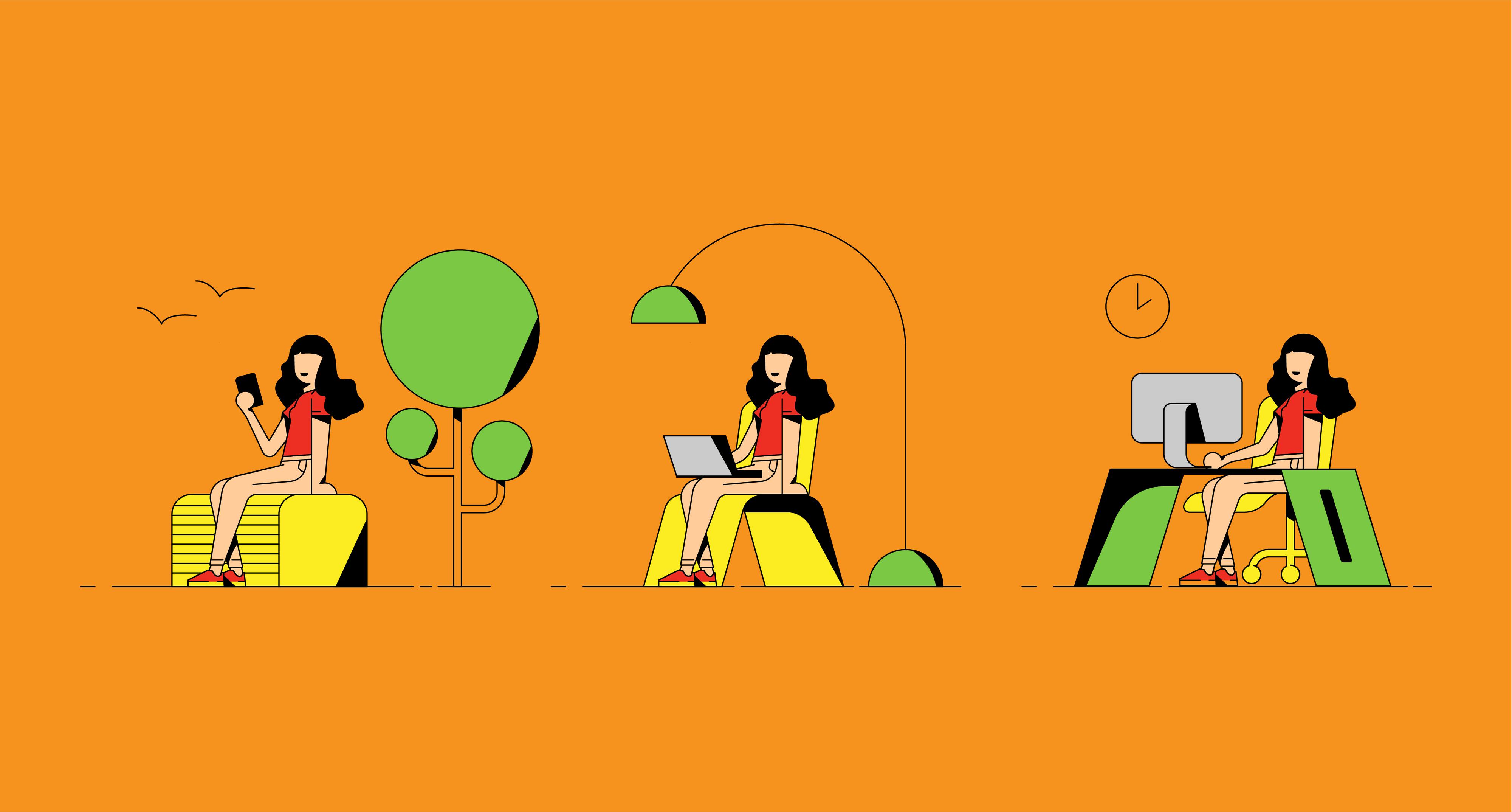
WeWork, the workspace startup that shook the contract furniture industry now seems like Icarus, flying too close to the sun. With its descent, some industry players may be reveling in a strong sense of "I told you so." Still, the company which once had a valuation of $47 billion has left a mark on the way people think about and interact with workspaces. There is a lot to dissect in WeWork’s return to earth – here are a few key impressions and questions that may last in the contract furniture industry.
Expecting Flexibility
WeWork has taught us more about what people desire – quality, functioning offices, amenities, support – all things that push toward a better work-life balance, increased flexibility, and a stronger sense of community. People like to be around other people, whether it’s at a coffee shop or a hotel lobby. The impact of providing workplace flexibility differs depending on the company. For startups and small companies, it provides a quieter, more professional workspace, including the assistance of a receptionist and other amenities that you can't find at a coffee shop. Growing and larger companies need more adaptive workspaces that can scale up or down with a smaller investment. For bigger companies, flexibility is needed in and out of the office.
WeWork highlighted these needs for both employees and businesses, which puts pressure on the industry as people will continue to look for even more flexible solutions. Can the office be as flexible for teams that change sizes and have different needs, even on a day-to-day basis?
Managing Capital Investments
Large corporations also saw an opportunity. WeWork isn't the only co-working company, but its rapid expansion and popularity accelerated the growth of the category, cementing the expectation of flexible workspaces for employees. Facility planners have started to view co-working spaces as part of their master plan, allowing them to rethink their capital investments. Some companies are creating new offices that support fewer than their total headcount as they lean on mobile workers and co-working spaces. Others are reducing their employee square footage so they can earn extra income by leasing the extra space.
Having new options for savings and revenue allows them to think differently about the permanent versus flexible space. How might organizations learn from the sharing economy and design for maximum capacity? How might products be designed to flex with growing or shrinking spaces?
New Collaboration
Changes in spaces have an effect on teams. Human resources, facility managers, and CFOs are all trying to better understand how to attract and retain talent while managing costs. Facilities have a big role to play. Like the open office trend, even greater flexibility has also opened new ways of thinking about reserved space. In leased spaces like WeWork, not even the CEO can bump someone from another company. This trend has already moved into owned spaces as well.
Some teams are moving toward a model that uses space less like an office and more like a hotel. How are hospitality designers using space to attract people and create engaging gathering spaces?
Getting Circular
The speed of change is evident in these new models. As furniture becomes more closely tied to fashion, “capsule” pieces are combined with seasonal or trendy collections that change more frequently. Commercial interiors are becoming more like retail. The effect of this shift may be felt in any part of the category and the broader economy. Furniture as fashion runs contrary to the idea of quality standards requiring furniture to last for 30 years. It lowers the barrier of entry and opens the category to more competition. This new pressure will force the industry to think differently about service and supply chain in order to keep up. It also has the potential to create more waste.
Leaders will adopt a circular economy approach in order to maintain relevance with influencers and decision-makers. Some innovators may go so far as to adopt a subscription-based business model. How might manufacturers, dealers, and installers leverage a circular approach to innovate in the category?
What’s Next?
WeWork may have been on the bleeding edge, and its demise may be a product of poor business practices, but the future of the industry is not going back to business as usual. Like Uber, which hasn’t fully proven its business model, the genie is out of the bottle. Uber and Lyft are imperfect businesses but their services are superior to taxis. The category will rebalance and these startups will either stabilize or taxis will evolve. The same is true with commercial interiors.
WeWork’s business model may have to adapt to survive, but the value to customers is clear. The gig economy will open new pathways beyond big contracts with big companies. If office furniture companies claim to do more than just make furniture, leaders will consider their business model. The industry as a whole will adapt to evolving customer needs – or other investors will.
This article originally published in Contract Furnishings News, the daily media record for the contract furnishings industry, and the voice of authority for commercial design professionals.
